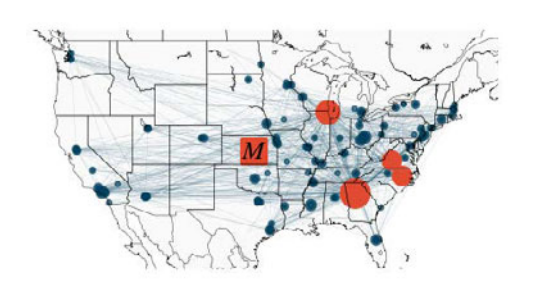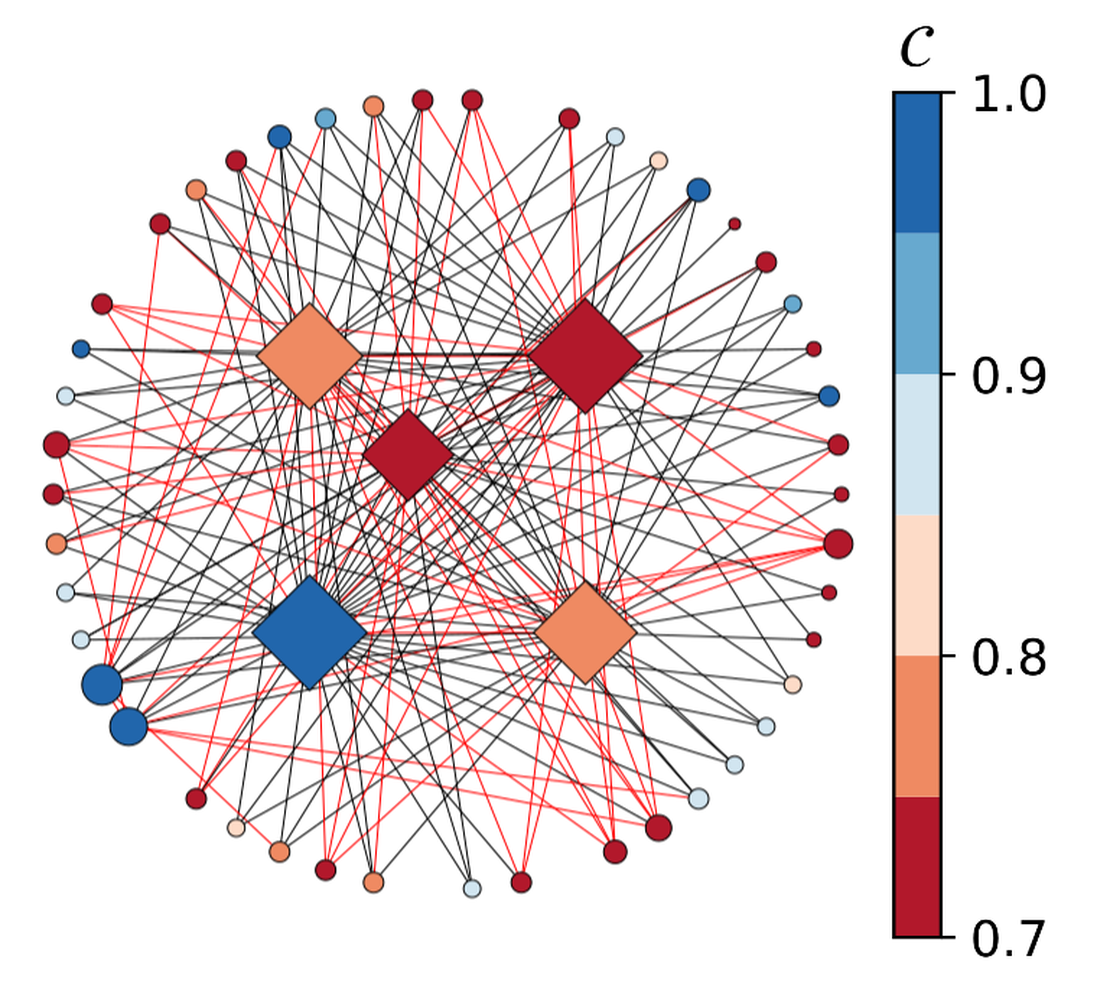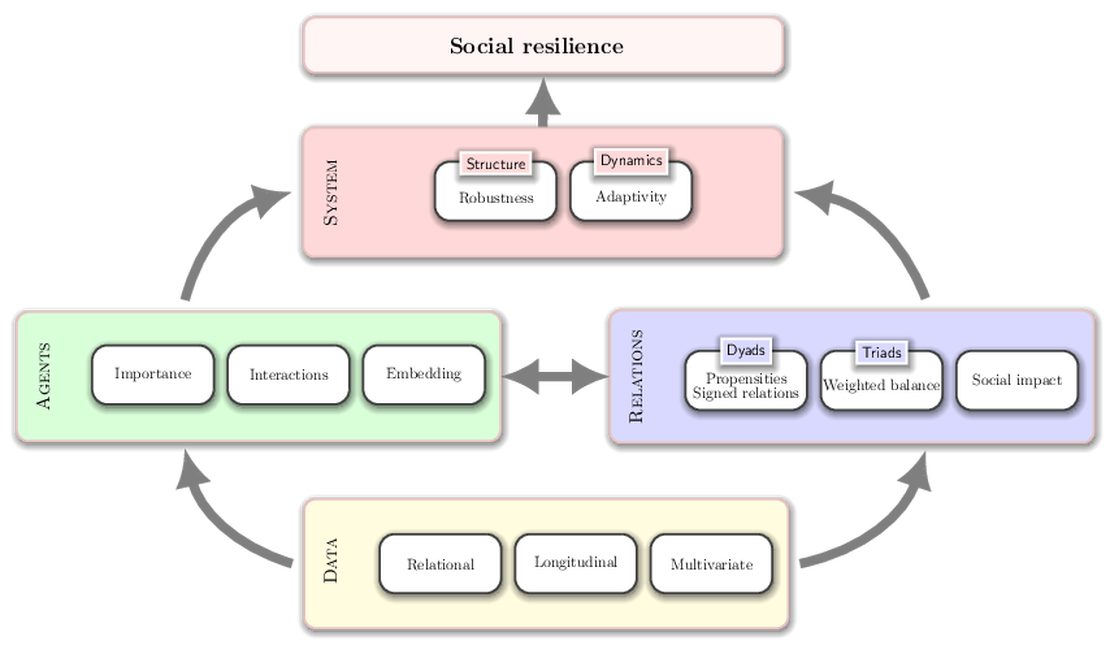Efficiency and resilience: Key drivers of distribution network growth
- Ambra Amico , Giacomo Vaccario , Frank Schweitzer
- Pharmaceuticals , Economic networks , Resilience , Data driven models , Agent based models , Supply chain
- August 23, 2024
Abstract
Networks to distribute goods, from raw materials to food and medicines, are the backbone of a functioning economy. They are shaped by several supply relations connecting manufacturers, distributors, and final buyers worldwide. We present a network-based model to describe the mechanisms underlying the emergence and growth of distribution networks. In our model, firms consider two practices when establishing new supply relations: centralization, the tendency to choose highly connected partners, and multi-sourcing, the preference for multiple suppliers. Centralization enhances network efficiency by leveraging short distribution paths; multi-sourcing fosters resilience by providing multiple distribution paths connecting final buyers to the manufacturer. We validate the proposed model using data on drug shipments in the US. Drawing on these data, we reconstruct 22 nationwide pharmaceutical distribution networks. We demonstrate that the proposed model successfully replicates several structural features of the empirical networks, including their out-degree and path length distributions as well as their resilience and efficiency properties. These findings suggest that the proposed firm-level practices effectively capture the network growth process that leads to the observed structures.



